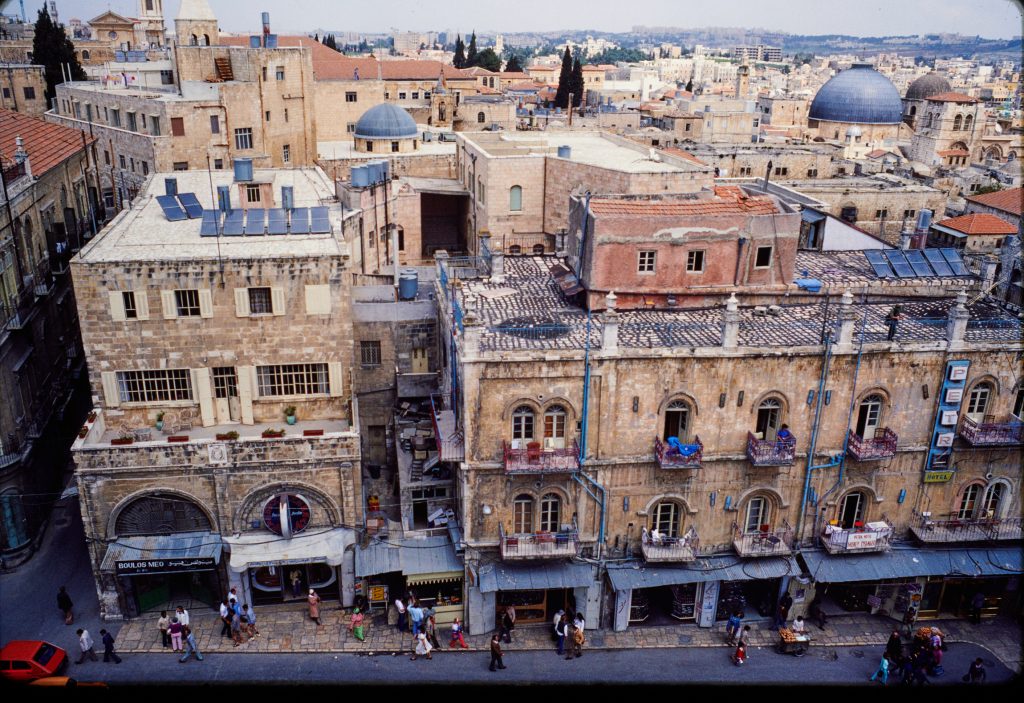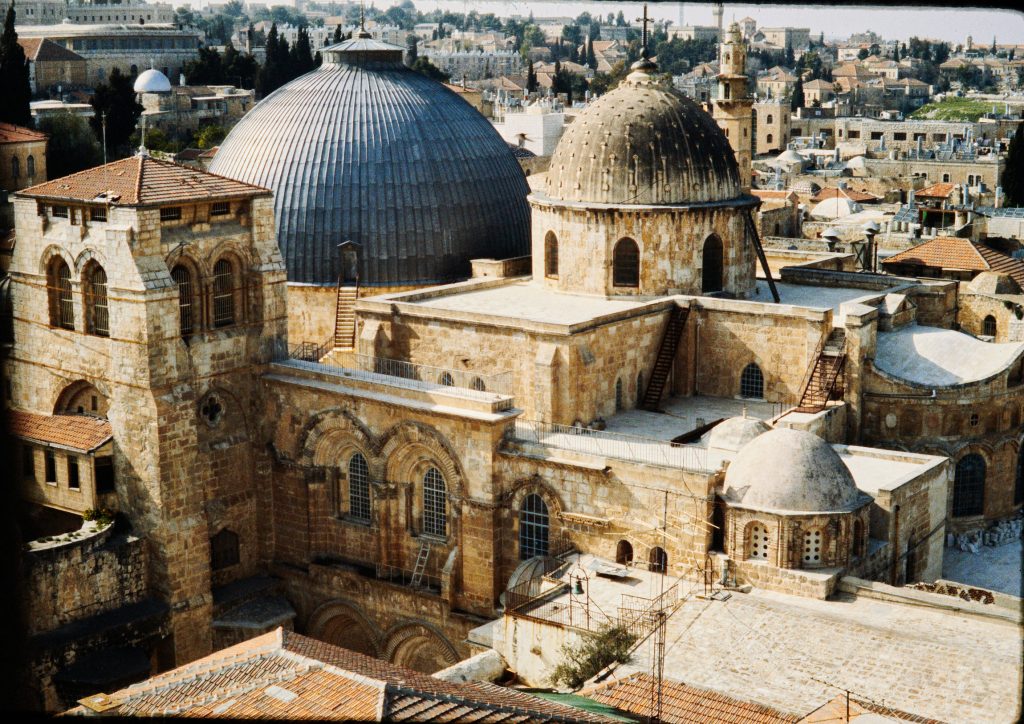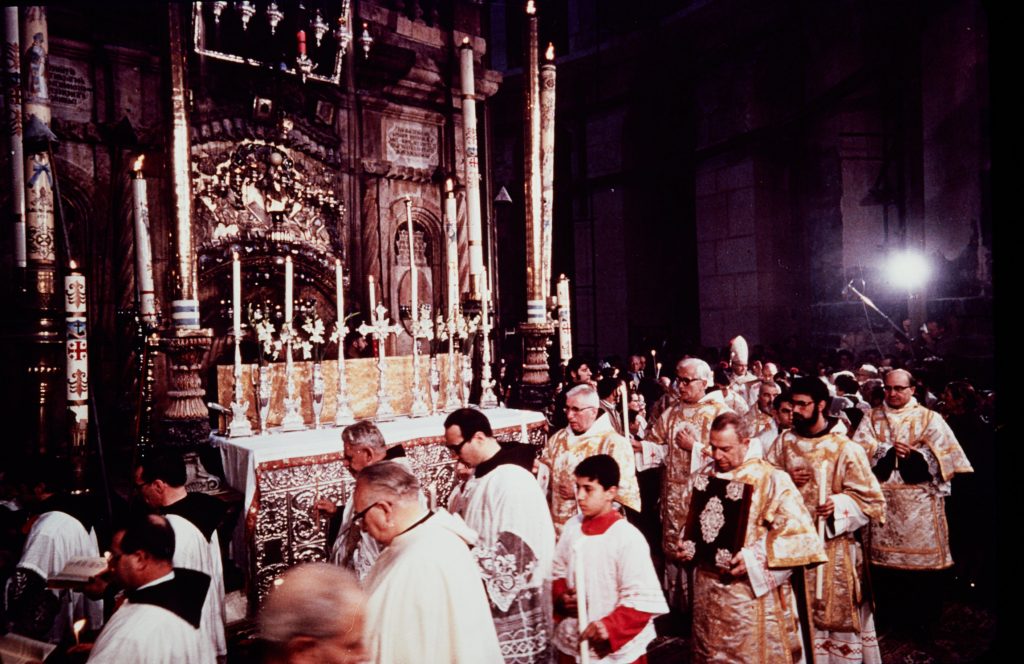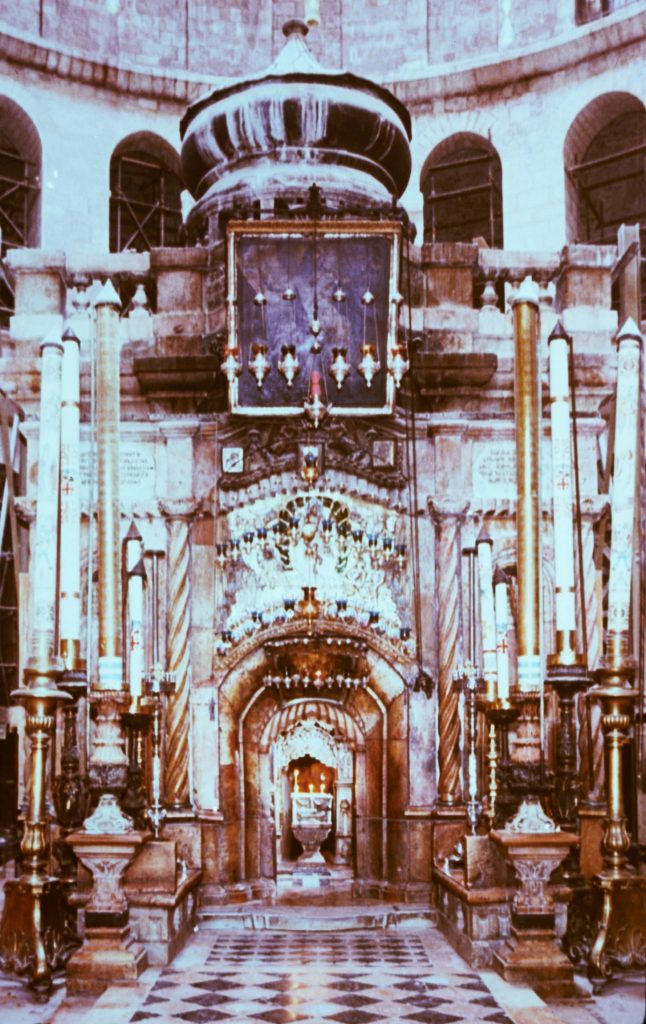
Christianity’s holiest ancient centre is the Church of the Resurrection, Jerusalem, seen above in the distance, to the right. The church has marked from the beginning the place of Christ’s passion. Over the years, the building has been added to with additions, as you can see below, earning it the notorious description as a plain holy building covered over with barnacles.


Palestine Israel not only embodies conflict among religions but conflict within religions as well. Debates and physical conflict rage over who of all of them upholds the true faith. Within the walls of the holiest church of the Christian religion were fought many battles over territory. When the British and the Balfour Declaration arrived, a firm hand was imposed: status quo.

Whatever territory inside the church was staked out by each denomination would remain fixed. The Greek and Armenian Orthodox have pride of place. The Latin Christians have a significant sector. Syrians and the others have bits and pieces. The Ethiopian Orthodox are clinging to a small space up on the roof pictured here.
The two interior photos of the Church of the Resurrection are purchased slides from Holy Land Views. I stood in the place of the photos for the Celebration of the Holy Fire. Greek and Armenian patriarchs would be stripped of elaborate robes and ritually searched for matches before they would enter the tomb of Christ, the Holy Sepulchre, and the door sealed. They would wait in the tomb for the Holy Fire to be sent from heaven into the tomb to light their candle. The light would then be passed out though a hole in the wall of the tomb to those waiting outside. The flame would be spread candle to candle and from there sent by vehicle and plane to the whole of the orthodox world to light all churches from the one miraculous Holy Fire.

(purchased slide from Holy Land Views, 1983)
We have this modern western notion that worship of God should be solemn and ordered with every word heard and attended to. Theatre has gone the same with audience lights turned out to keep them quiet. There are many accounts from the Dublin Abbey theatre for example, before turning out the lights where the audience would shout out warnings to the actors about who is standing behind the door or what someone said about them earlier. The Globe Theatre in Shakespeare’s time wasn’t like now; people spent more time talking and shouting at each other than listening to the actors. The theatre would go quiet for a favourite monologue recited by a lead actor, but then go back to their noisy banter. Even actors on stage not key to the scene would be distracted, perhaps in conversation with the audience.
Jewish worship before the final destruction of the temple was a loud cacophony, not some sober attentive order of worship. In fact Christian Orthodox worship puts little importance on hearing all the words as is the case in the Latin West and protestant traditions. Howliimited we are to think worship is only right the way we do it. For the Orthodox, the important point is the arrival of the patriarch near the end of the service. The service of the Holy Fire was more like a Grey Cup football game than solemn worship. Shouting would rise and fall. Men would piggyback each other around in wild hilarity. One year of the Holy Fire everyone had to leave the church at the end of the day and return the next day as the Holy Fire didn’t appear until the second day. We waited around for about 4 hours the year I attended, and then everything went absolutely mad. The fire came, some will attest to seeing it fly down though the ceiling, and in great celebration of cheering and screaming the fire spread like wildfire from there out to the ends of the earth, and God, Holy God, The Living God, was adored.
